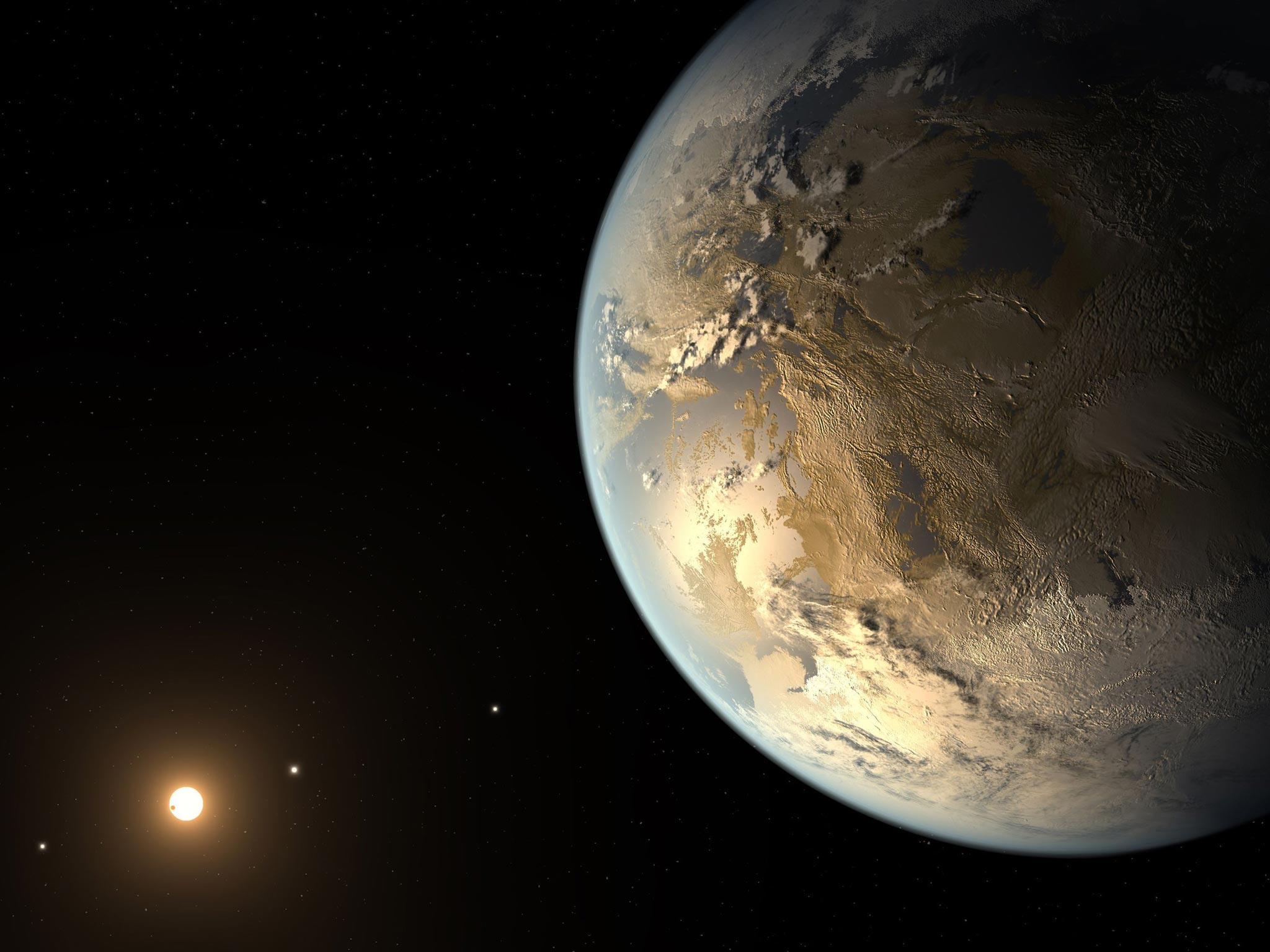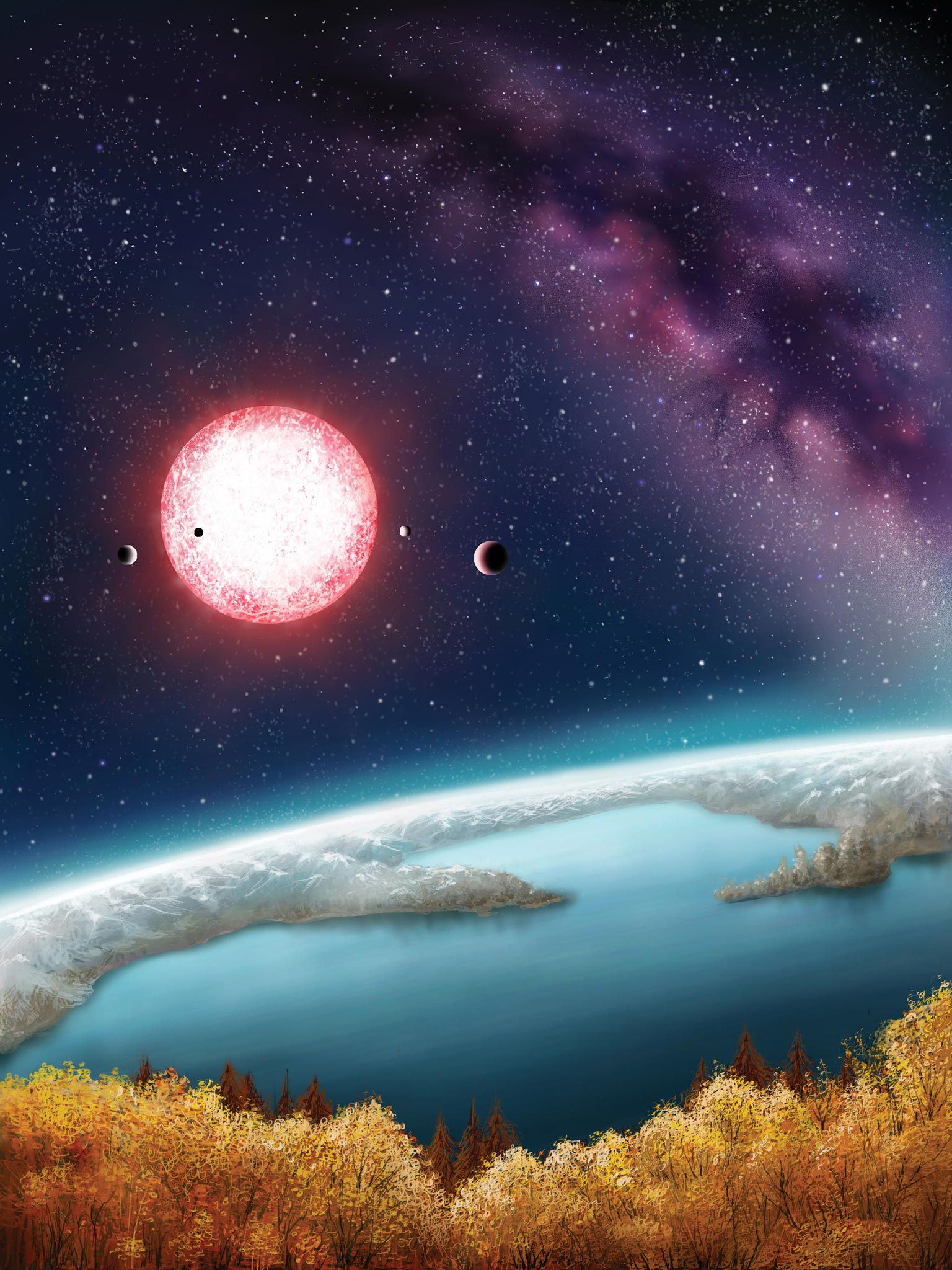Earth 2.0? Astronomers reveal Kepler-186f, the latest planet in a habitable 'Goldilocks zone'

A planet similar in size to Earth with surface temperatures suitable for water to exist in liquid form has been discovered orbiting a distant star in what is the strongest candidate yet for a habitable world outside the Solar System.
Scientists said last night that the planet, called Kepler-186f, is the smallest “exoplanet” so far discovered and is highly likely to be a rocky planet like Earth, with its own atmosphere and solid surface where liquid water and possibly life can exist.
Astronomers have now confirmed the existence of nearly 1,000 planets beyond the Solar System using highly sophisticated techniques based on measuring minute changes in the intensity of starlight as objects pass in front of their own sun. Hundreds of other planetary candidates are awaiting analysis.
However, most of the confirmed exoplanets are gaseous giant planets like Jupiter with no solid surfaces, potentially toxic atmospheres, and that are either too hot or too cold for liquid water and hence life.
Kepler-186f, meanwhile, fits the description of a rocky planet with a benign atmosphere that lies within the water-friendly “Goldilocks zone” which is neither too hot, nor too cold for life. It comes the closest yet to being “Earth 2.0”, astronomers said.
“This is the first definitive Earth-sized planet found in the habitable zone around another star,” said Elisa Quintana of the SETI Institute at Nasa Ames Research Centre in Moffett Field, California, and lead author of the study published in the journal Science.
Finding Earth-like habitable planets outside the Solar System was the main purpose of the Kepler space telescope and the discovery of such a planet around a red dwarf star, Kepler 186, suggests there are many more to be found given that this type of star comprises about 70 per cent of the hundreds of billions of stars in the Milky Way galaxy, Dr Quintana said.
The size of the planet, estimated to be 1.1 times the radius of Earth, suggests that it is likely to have a rocky surface rather than being a large gas giant planet, although this can only be confirmed after scientists have calculated its mass and hence density.
The red dwarf star Kepler 186 is 500 light years away and the planet’s orbit is similar to that of Mercury’s which is too hot for water. However, because red dwarfs are smaller and cooler than the Sun the planet lies just on the outer edge of its sun’s habitable zone where liquid water can exist – although if water does exist some of it is likely to be frozen for at least part of the time.

“We’re always trying to look for Earth analogues, and that is an Earth-like planet in the habitable zone around a star very much the same as our Sun,” said Stephen Kane, an astronomer at San Francisco State University who chairs the habitable zone working group of the Kepler mission.
“Some people call these habitable planets, which of course we have no idea if they are. We simply know that they are in the habitable zone, and that is the best place to start looking for habitable planets,” Professor Kane said.
Planets similar to Venus orbit a little too close to the Sun and so are in danger of losing their water and being cloaked in carbon dioxide, whereas planets like Mars orbit a little too far away, which means any surface water is locked away as ice.
Even though the orbit of Kepler 186f takes it on the extreme cold side of its habitable zone, there is a possibility that it slightly larger size compared to Earth means that it has pulled in a thicker atmosphere, making it warmer than it otherwise might be due to an enhanced greenhouse effect, Professor Kane said.
The planet is the fifth to be discovered orbiting the same red dwarf star and Dr Quintana and her colleagues detected its faint signature when analysing the minute fluctuations in the brightness of the distant star as the planet passed between the star and Earth. Calculations showed that its orbit of 130 days takes it within the star’s vital habitable zone.
“We are not saying that there’s water on the surface. All we know is that the surface has the right temperature that water could exist there in a liquid state,” Steve Howell, Kepler’s project scientist at Nasa Ames, told Science.
Join our commenting forum
Join thought-provoking conversations, follow other Independent readers and see their replies
Comments